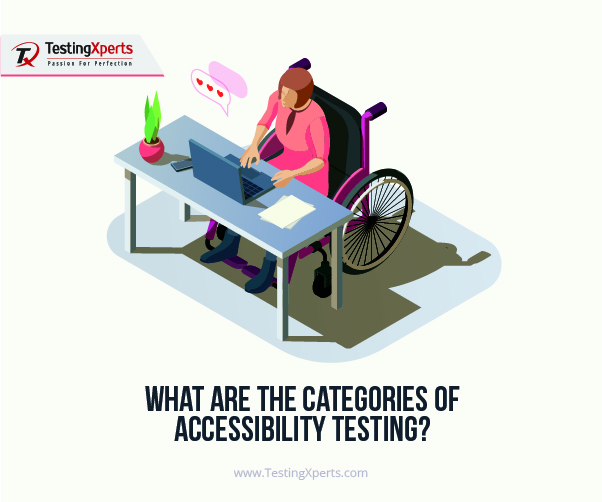What are the keypoints for accessibility testing?
Accessibility testing provides a seamless platform where disabled users can interact, navigate, understand and perceive the website or application with ease. Those barriers that make it hard for disabled people to access the website or application are entirely taken care of by the accessibility testing method. All the user interface and usability aspects are taken into consideration when a new website or application is being built so that eventually, the end result must be that the product should be accessible. In order to enhance and optimize the performance of accessibility testing, there are accessibility testing tools that can be judiciously implemented based on the project scope. In this article, you will get to know the key points for accessibility testing.
Body:
What is accessibility testing?
It is a testing method that ensures the software application or website is fully accessible and can be easily accessed by the disabled community also. The application or website is built according to the WCAG (Web Content Accessibility Guidelines) standards. The content on the website is improved through the use of assistive technologies. When a website is being developed, the team makes sure that it is being developed in accordance with the accessibility design.
Following are the eight key points that need to be considered for performing accessibility testing:
1. Avoid Marquee text: Shiny text should be avoided and the text should be kept as simple as possible
2. Simple language should be used: Learning difficulties are faced by cognitive disabled users. Sentences should be formed in a simple manner so that they are easy to read
3. Descriptive link text: Web pages are accessed by visually disabled users by clicking on the tab button on the keyboard and then moving from link to link. So, it becomes crucial when it comes to properly defining the description of the links. The tab key should be used to access the hyperlinks.
4. Appropriate pictures can be provided as and where required: Pictures are considered to be more impactful than words. Appropriate pictures can be added to the text as and where required. Literacy challenged users can understand the content of the website through the medium of pictures.
5. Large sentences should be divided into small simple sentences: The information on the webpage is listened to by visually disabled users and then they try to remember it. Hence, if the sentences are small, then they can remember and recall information easily.
6. The value of CSS layouts: Compared to HTML code based websites, CSS based websites are considered to be more accessible
7. Pop-ups should be ignored: When a screen reader is being used by users to read web pages, pop-ups can prove to be inconvenient. The page is read by the screen reader from top to bottom and if there are pop-ups popping up every now and then, then instead of reading the main content, the content on the pop-ups will be read out. This will in turn confuse the users and they will not be able to obtain the right information. Hence pop-ups should be ignored.
8. Navigation should be consistent: All the pages should be provided with consistent navigation as it would prove to be highly important for cognitive disabled users. Maintaining the consistency of the website is considered to be a good practice and the pages also need not be modified on a regular basis. Keeping up with the new layout can prove to be time-consuming and can eventually become a relatively difficult task to deal with.
Conclusion: If you are looking forward to implementing accessibility testing for your specific project, then do get connected with a premium software testing services company that will provide you with professional consultation and support in developing a crystal-clear and in-depth testing strategy that is in line with your project specific requirements.
About the author: I am a technical content writer focused on writing technology specific articles. I strive to provide well-researched information on the leading market savvy technologies.




Comments
Post a Comment